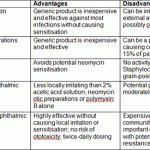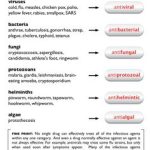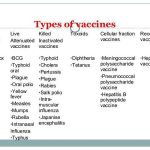
Rubella vaccine. Varicella vaccine. Varicella-zoster immune globulin. Immune globulin. Rho(D) Immune globulin (RDIg).

The characteristics that need to be considered when administering antibiotics include absorption (when dealing with oral antibiotics), volume of distribution, metabolism, and excretion. These factors determine the dose of each drug and the time interval of administration. To effectively clear a bacterial infection, serum levels of the antibiotic need to be maintained above the minimum inhibitory concentration for a significant period. For each pathogen, the minimum inhibitory concentration is determined by serially diluting the antibiotic into liquid medium containing 104 bacteria per millihter.

Clinicians should be familiar with the general classes of antibiotics, their mechanisms of action, and their major toxicities. The differences between the specific antibiotics in each class can be subtle, often requiring the expertise of an infectious disease specialist to design the optimal anti-infective regimen. The general internist or physician-in-training should not attempt to memorize all the facts outlined here, but rather should read the pages that follow as an overview of anti-infectives. The chemistry, mechanisms of action, major toxicities, spectrum of activity, treatment indications, pharmacokinetics, dosing regimens, and cost are reviewed.

Fungi are eukaryotes, and they share many of the structural and metabolic characteristics of human cells. As a result, designing agents that affect fungi without harming human cells has proved difficult. One major difference between the two cell types is the primary sterol building block used to form the plasma membrane. The fungal plasma membrane consists of ergosterols; the major sterol component of the human plasma membrane is cholesterol.

Vaccine and toxoid recommendations. Diphtheria toxoid adsorbed (DTA) and Diphtheria antitoxin (DA). Haemophilus influenzae type (HIB) vaccines. Influenza virus vaccine. Measles vaccine. Meningococcal polysaccharide vaccine. Mumps vaccine. Pertussis vaccine. Poliovirus vaccines. Rubella vaccine. Varicella vaccine. Varicella-zoster immune globulin. Immune globulin.